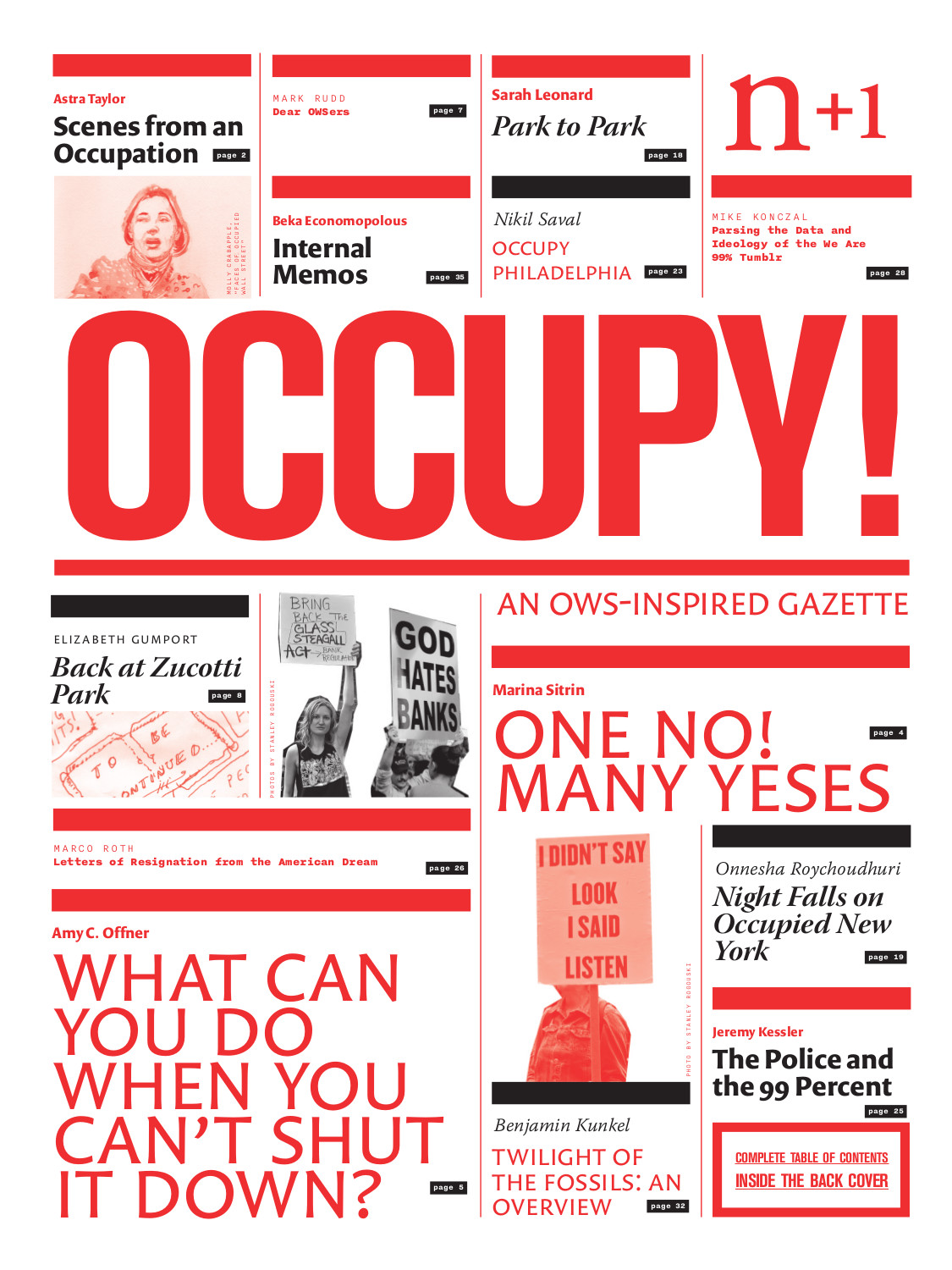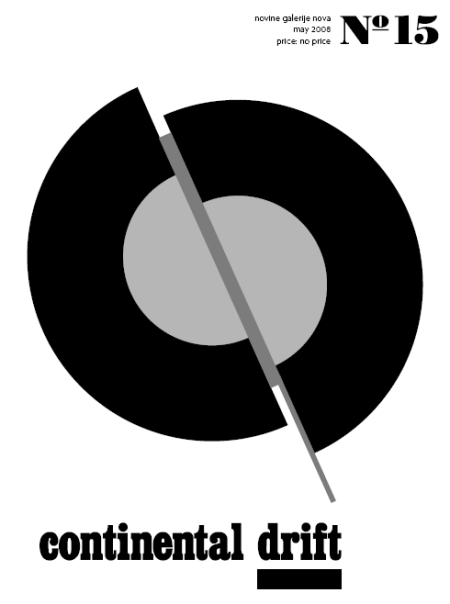Occupy! An OWS-Inspired Gazette, 1 (2011)
Filed under magazine | Tags: · activism, debt, economy, money, occupy movement, politics, protest

“With the help of Astra Taylor (Examined Life; Zizek!) and Sarah Leonard of Dissent and the New Inquiry, we’ve put together a history, both personal and documentary, and the beginning of an analysis of the first month of the occupation. Articles deal with the problem of the police; the history of the “horizontalist” management structure at OWS; how to keep a live-in going when what you’ve tried to shut down refuses to shut down (like Harvard, or Wall Street); on whether the Fed should be abolished; on where that Citibank arrest video came from; on occupations in Oakland, Philadelphia, Atlanta; on what happens next; and more.
It’s an attempt to begin to think through what is happening, written by people both on the ground and across the river. We hope you’ll read it and discuss it with us. There’s a lot more thinking and doing to do.” (authors)
Editors Astra Taylor, Eli Schmitt, Nikil Saval, Kathleen Ross, Sarah Leonard, Mark Greif, Christopher Glazek, Keith Gessen, Carla Blumenkranz
Publisher n+1, New York, October 2011
40 pages
Project’s Kickstarter page
Facebook page
Publisher
PDF (updated on 2017-12-2)
See also issues 2 and 3.
Comment (0)Continental Drift Zagreb (2008)
Filed under newspaper | Tags: · activism, art, autonomy, capitalism, cartography, creative industries, economy, geopolitics, neoliberalism, politics, power, war

“It’s always useful to turn dreams into realities, because you get to measure the differences and even let yourselves be guided by the intrinsic gaps between the two. Continental Drift was the dream of a geopolitical analysis carried out by a diverse group (theorists, artists, activists) and mapped onto everyday social and political life as an expanding set of explanations and expressive potentials. The dream was made in USA, and even on Wall Street in New York City, but it was realized by a group of immigrants, returning exiles and general misfits, all marked by the basic heresy of left positions in an age of liberal capitalist empire. By transplanting this inquiry to Zagreb, Croatia – the home of the What, How & For Whom? collective – it seems we are bringing a new dream into focus. The desire is that of widening the intrepretative circle, crossing divides of language and historical experience, trying to build capacities of understanding and confrontation between the immigrants, exiles and misfits of the big continental blocs and especially their edges – the cracks that open up wherever anyone can no longer stand what is taken and imposed as the norm. Empire as we see it is always falling apart, for better and usually for worse, under the pressure of massive processes which we are unlikely to even see coming, let alone grasp or have the agency to change in any way. Yet as the urgency and also the absurdity of the present predicament begins to rise in intensity, at least all around there are people trying similar experiments.” (Brian Holmes)
Novine Galerije Nova, No 15, May 2008
Publishers: What, How and for Whom/WHW, Zagreb; AGM, Zagreb
Editors: Continental Drift Zagreb team (Ayreen Anastas, Rene Gabri, Brian Holmes, Claire Pentecost, What, How and for Whom/WHW, Ivet Ćurlin, Ana Dević, Nataša Ilić, Sabina Sabolović)
Design: Dejan Kršić
36 pages
S. Vitali, J.B. Glattfelder, S. Battiston: The Network of Global Corporate Control (2011)
Filed under paper | Tags: · economics, economy, finance, governance, market, mathematics, networks, power

The structure of the control network of transnational corporations affects global market competition and financial stability. So far, only small national samples were studied and there was no appropriate methodology to assess control globally. We present the first investigation of the architecture of the international ownership network, along with the computation of the control held by each global player. We find that transnational corporations form a giant bow-tie structure and that a large portion of control flows to a small tightly-knit core of financial institutions. This core can be seen as an economic “super-entity” that raises new important issues both for researchers and policy makers. (Abstract)
By Stefania Vitali, James B. Glattfelder, Stefano Battiston
Second version
Published on 19 September 2011
36 pages
commentary (Andy Coghlan and Debora MacKenzie, New Scientist)
More information (arXiv.org)
Comment (0)
